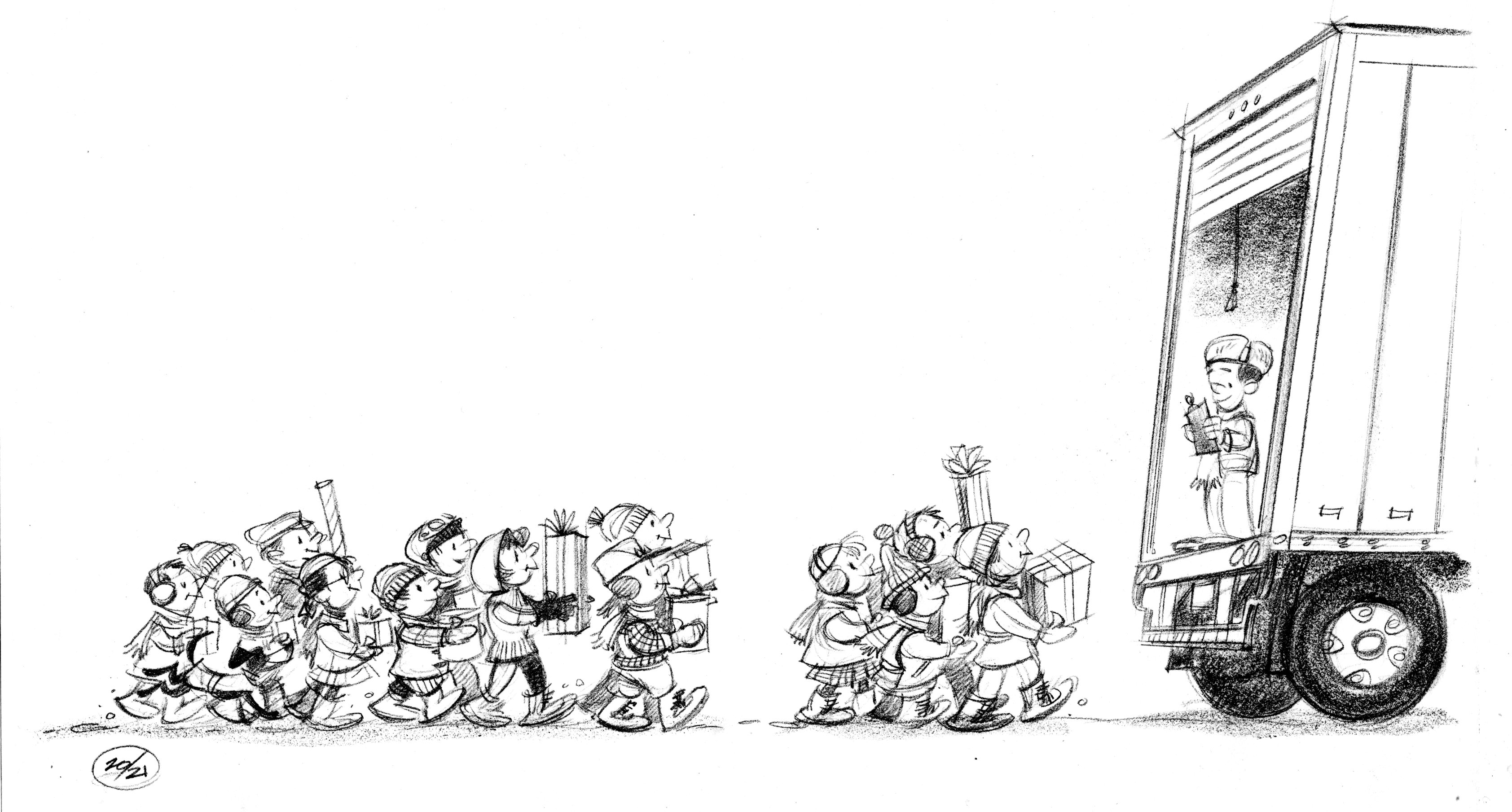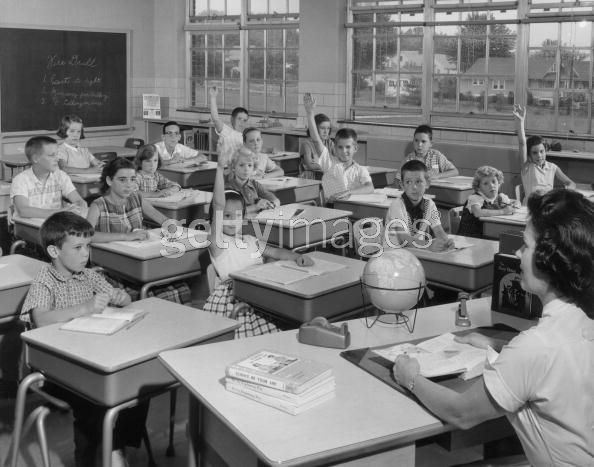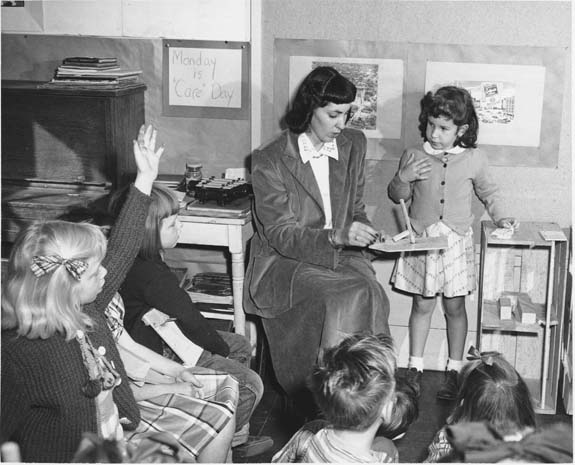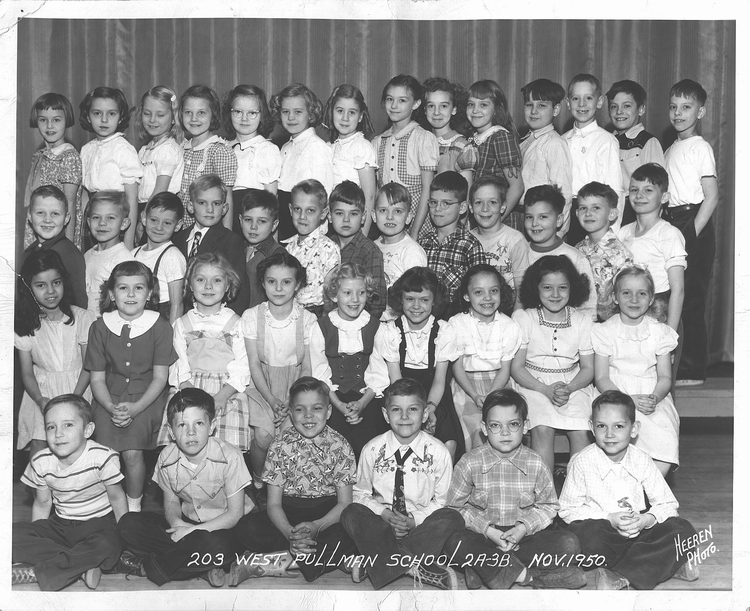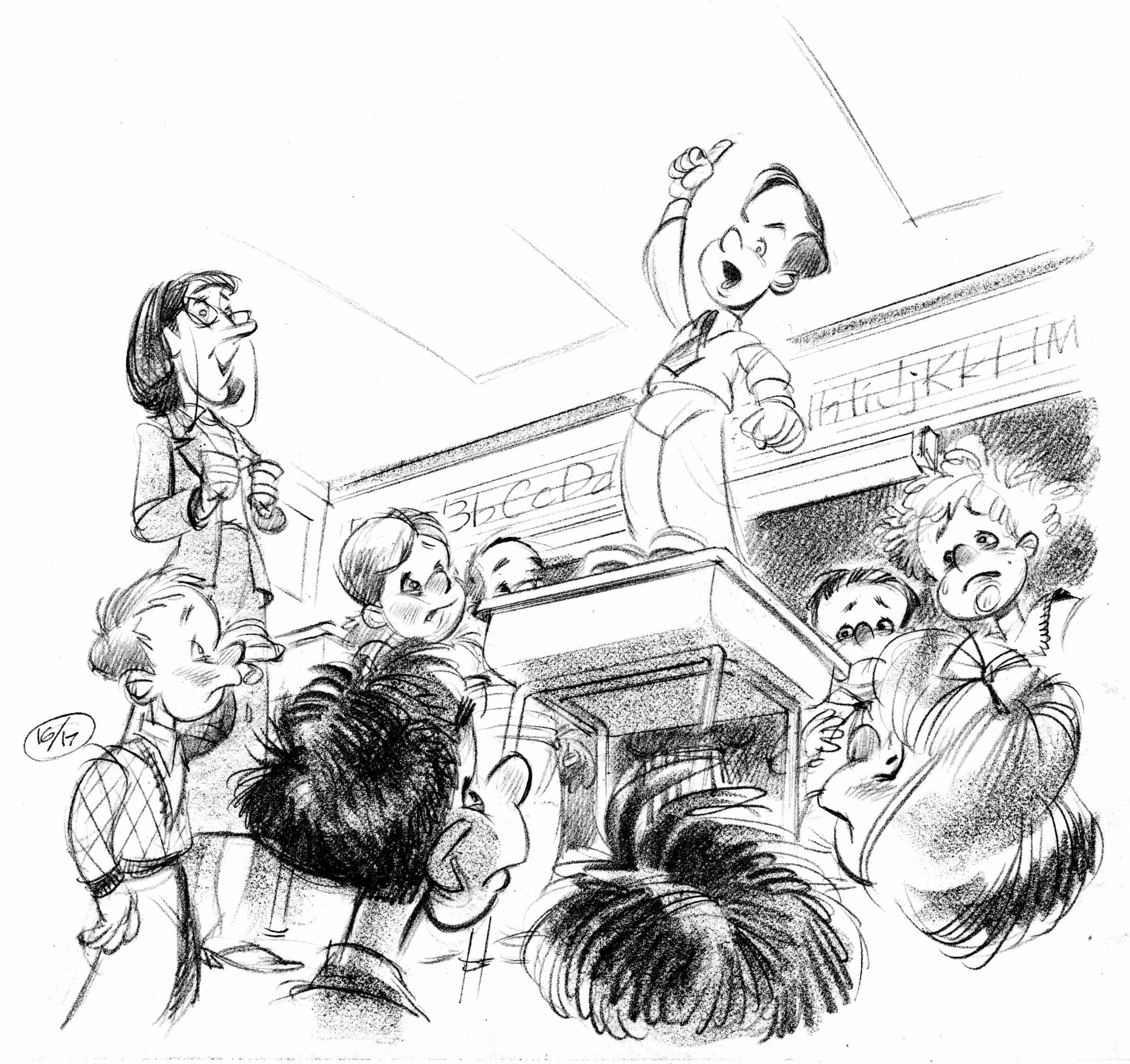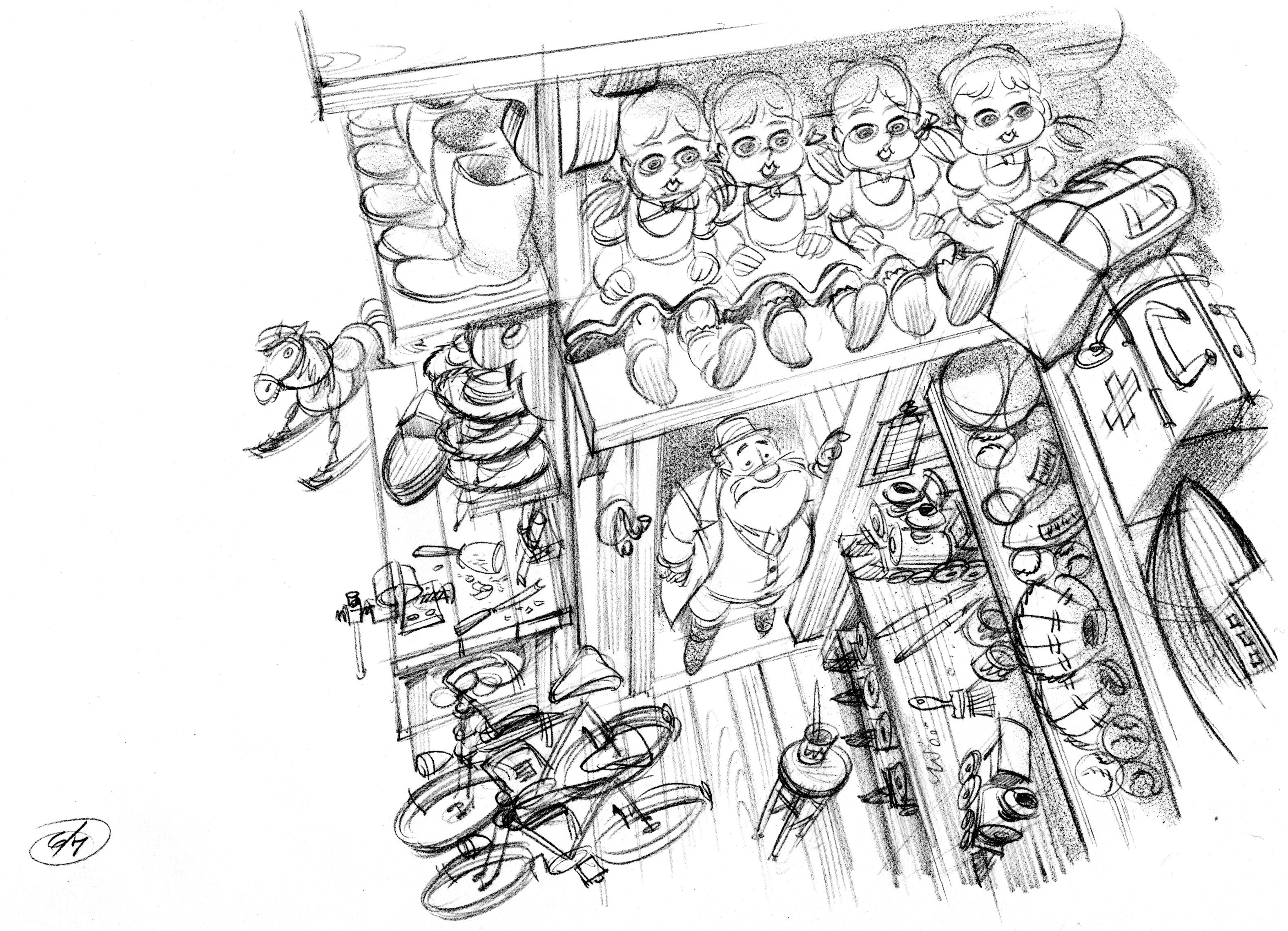Mid-century school kids
Here’s Ignatius Thistlewhite and his school chums from The Year Without a Santa Claus. Phyllis McGinley wrote the story in the 1950s, so I liked the idea of keeping it set in that time.
Most people, when they think of that era associate it with early rock ‘n’ roll, greasers, big cars with fins, malt shops—the image cultivated by movies and tv like Grease, Happy Days, Hair Spray, American Graffiti & Back To The Future. I was born in the 1950s and started school in the early 60s, so I saw that time through a child’s eyes. I wore the clothes I put on Ignatius: a red fur cap with ear flaps and red plaid woolen pants. I didn’t wear a necktie as Ignatius wears in the sketches; art director Anahid Hamparian showed good sense when she asked me to lose it.
The classroom is how I remember Allen Road Elementary School under the tutelage of Mrs Gurney, Miss Yaeger, Mrs. Bowen, Mrs. Haskins, Miss Nugent & Miss Corey (the art teacher)—I know I’ve left out some names.
The b&w photo of the school teacher with the bangs shows a costume and hairstyle that are probably closer to the 40s, but she just looks so much like the teachers I remember. In the same shot is the back of a kid’s head that I found useful.
The perspective in my classroom illustration is clearly—what’s the word?—nuts. The kids in the foreground would need to be standing in a hole. But I wanted them down that low so that Ignatius could be that high. I think the composition works, and that’s what’s important. So there.

